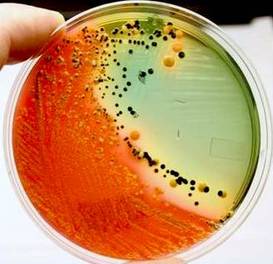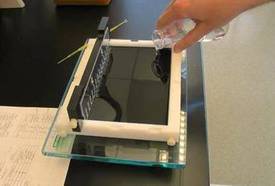---
Suzy is awakened by a
persistent nudge.
---
|
The interruption of her deep sleep leaves her confused and as her eyes focus; she makes out the silhouette of her youngest daughter, Megan, who is relentlessly poking her arm. This was an all too familiar scene for Suzy. Megan was known for having nightmares and it was not unusual for her to find comfort and security in her parent’s bed.
However, her persistence was a little different. “What is it?” Suzy asked. Megan speaks inaudibly as Suzy, still clearing the cobwebs from her sleep, tries to comprehend what she says. “What is it? What is wrong?” “My stomach hurts bad. I don’t feel good. I have to go to the bathroom.” Suzy gets out of bed to help Megan. Megan had just learned to go on her own, but her asking for help in the middle of the night was unusual. For the duration of the night and well into the next day, Suzy assists Megan in and out of the bathroom. What started out as diarrhea quickly evolves into vomiting and nausea. Initially Suzy thinks Megan has the stomach flu and figures it will pass. However, after a full day of constant diarrhea and vomiting, it is clear that Megan is getting worse.
Suzy takes Megan to the emergency room once she starts shaking. Once there, Megan is triaged and taken away through double doors by a nurse. Suzy fills out a stack of forms given to her by the receptionist, some of which has Suzy list the foods Megan ate within the last few days prior to illness. Afterwards, Suzy waits in the busy waiting room for what seems like an eternity before she is escorted to Megan in the intensive care unit (ICU). There in a small room, Suzy finds her daughter looking helpless, hooked up to IVs and a monitor measuring her vital signs. A doctor walks in and introduces himself before moving onto Megan’s condition. “Megan’s blood pressure is dangerously low and her symptoms-- diarrhea, vomiting and shaking, are consistent with septicemia-- which means bacteria in the blood. We sent her samples to the lab for testing, so we will know for sure in a few days. It’s possible Megan ingested something that’s making her sick. Does anyone else in the family have similar symptoms?” |
“No one else in the family was sick,” said Suzy.
“But what did Megan eat that others didn’t?” She thought.
Then she realizes Megan ate chicken nuggets a couple of days ago and she gets a sinking feeling of guilt as she remembers how quickly she breezed through the cooking instructions. At the time Suzy was distracted by a phone call and Megan was hungry.
A few hours later the hospital lab confirms that Megan has Salmonella in her blood. Megan is hospitalized for a couple of weeks and treated with a rigorous course of antibiotics, but her condition remains the same. The Salmonella bacteria isolated from Megan is sent to the state public health laboratory for further testing.
A few days later, Suzy’s worst fears are confirmed. The state public health laboratory performs further testing and discovers Megan is infected with the same salmonella strain currently involved in an outbreak. News reports show an increasing number of Salmonella cases from chicken products from the same manufacturer as Megan’s nuggets, and her strain matches the outbreak type perfectly.
“But what did Megan eat that others didn’t?” She thought.
Then she realizes Megan ate chicken nuggets a couple of days ago and she gets a sinking feeling of guilt as she remembers how quickly she breezed through the cooking instructions. At the time Suzy was distracted by a phone call and Megan was hungry.
A few hours later the hospital lab confirms that Megan has Salmonella in her blood. Megan is hospitalized for a couple of weeks and treated with a rigorous course of antibiotics, but her condition remains the same. The Salmonella bacteria isolated from Megan is sent to the state public health laboratory for further testing.
A few days later, Suzy’s worst fears are confirmed. The state public health laboratory performs further testing and discovers Megan is infected with the same salmonella strain currently involved in an outbreak. News reports show an increasing number of Salmonella cases from chicken products from the same manufacturer as Megan’s nuggets, and her strain matches the outbreak type perfectly.
The state laboratory sends the isolate to the Centers for Disease Control and Prevention (CDC) for even more testing. The test results reveal that the salmonella strain infecting Megan is resistant to a number of antimicrobials. This explains why antibiotics have not improved Megan’s condition.
Over a matter of weeks, Megan did recover. Thankfully her mother acted quickly and she received the medical attention that she desperately needed. Without the swift action of the medical staff, hospital laboratory, the state laboratory and CDC, her illness may have never been matched to the known outbreak. A lack of proper treatment could have easily led to Megan’s demise.
Over a matter of weeks, Megan did recover. Thankfully her mother acted quickly and she received the medical attention that she desperately needed. Without the swift action of the medical staff, hospital laboratory, the state laboratory and CDC, her illness may have never been matched to the known outbreak. A lack of proper treatment could have easily led to Megan’s demise.





